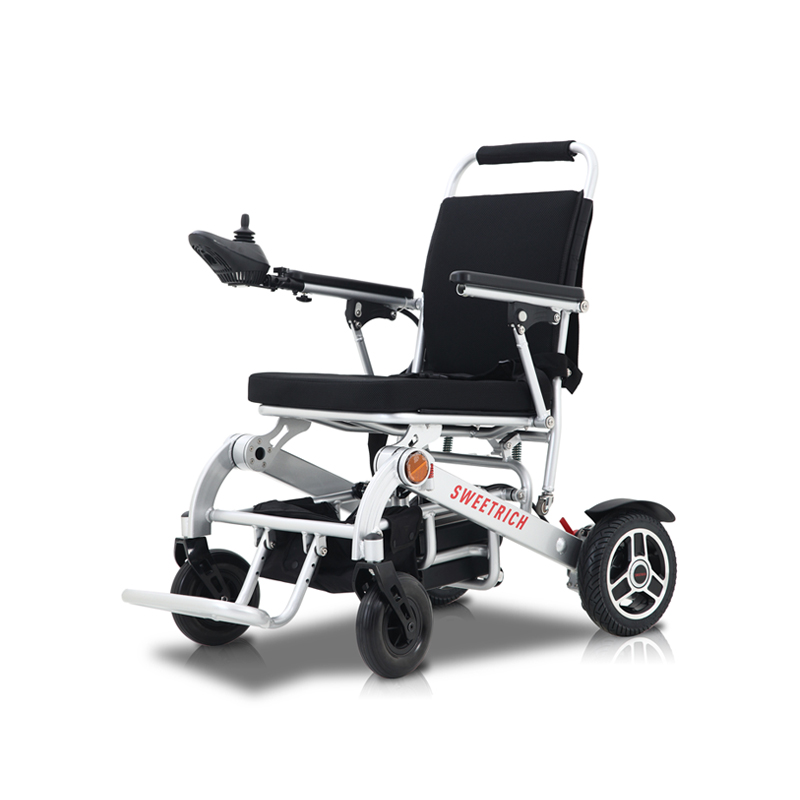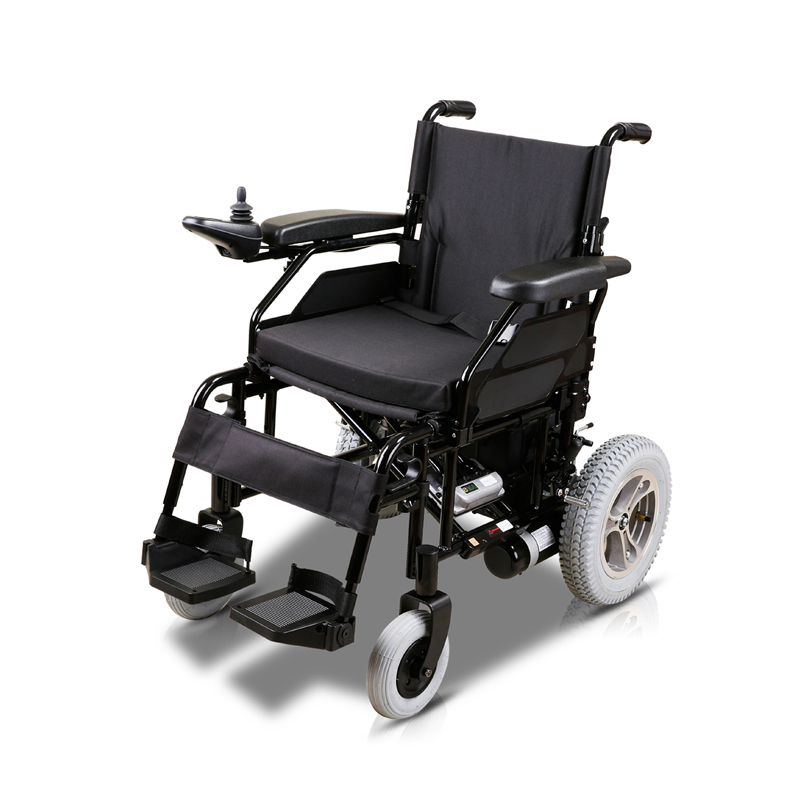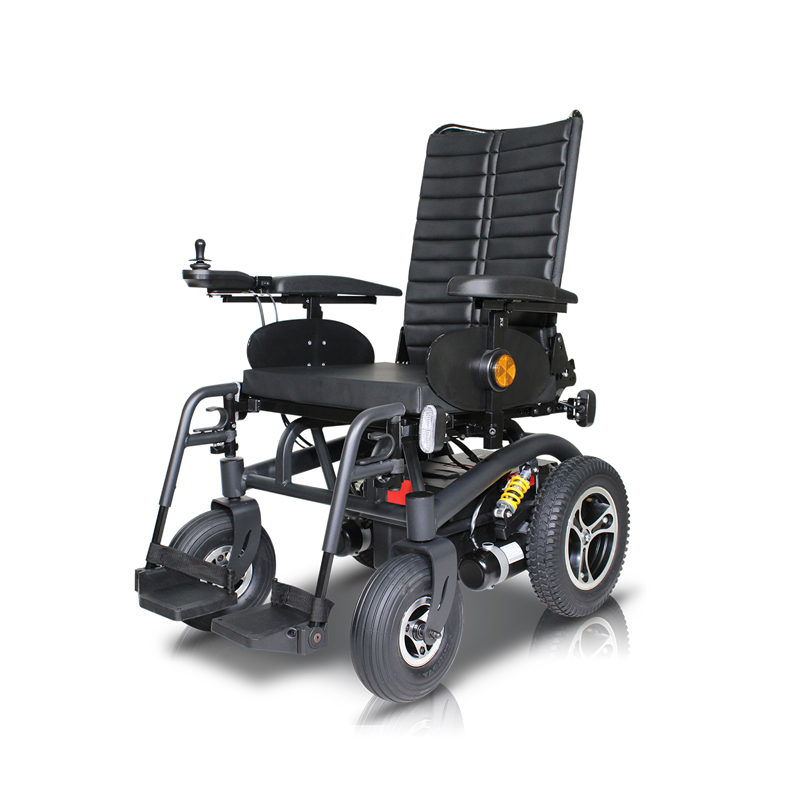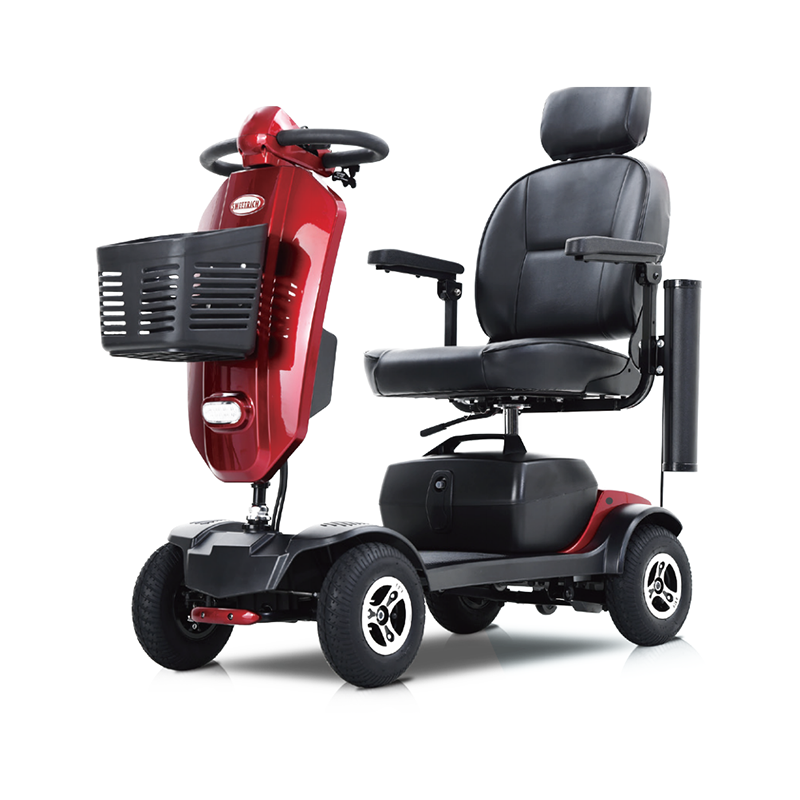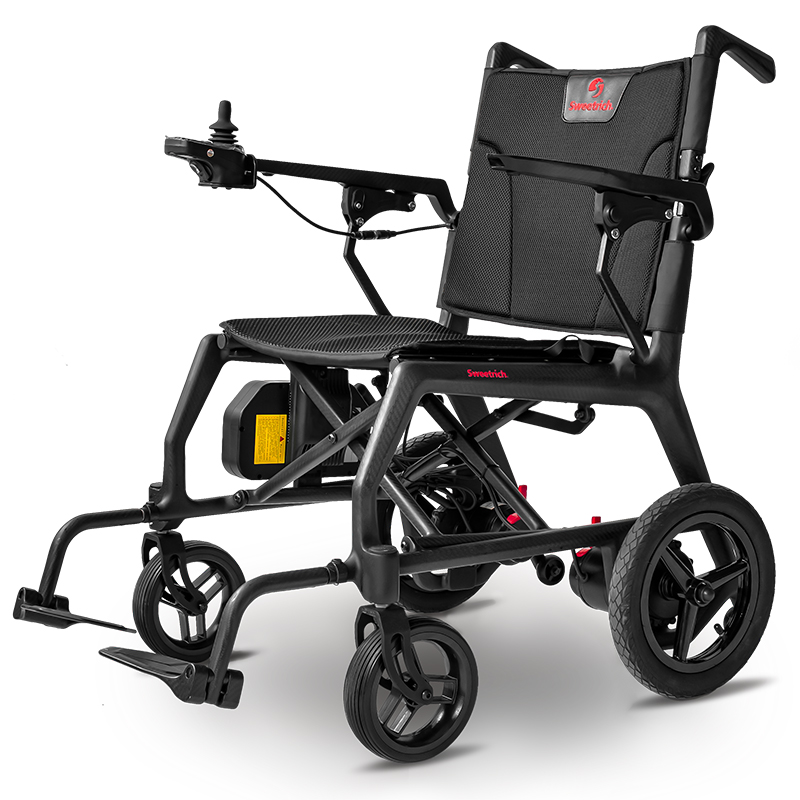I. Functional characteristics: unlocking a new realm of comfort
(I) Pressure dispersion and blood circulation promotion
For people who rely on wheelchairs for a long time, maintaining the same sitting posture can easily cause many physical problems. Long-term fixed posture will cause uneven pressure on various parts of the body, especially key parts such as the buttocks and back. The muscles are under long-term pressure and blood circulation is blocked. Not only is it easy to cause fatigue, but for those users who are at risk of bedsores, continuous local compression is even more dangerous. The emergence of the electric tilt system cleverly resolves this problem. The user only needs to operate it easily, and the wheelchair can be tilted back to a suitable angle as a whole, and the body pressure points will be redistributed. When the user is immersed in the world of reading, watching TV programs attentively, or simply wants to relax in his spare time, the tilted wheelchair puts the body in a more natural and comfortable state, promotes blood circulation, effectively relieves muscle fatigue, and brings a full range of comfort to the body. For example, in a warm home environment, the user can tilt the wheelchair and enjoy the afternoon in a nearly half-lying posture, away from the discomfort caused by long-term sitting.
(II) Body position adjustment and personalized comfort customization
Everyone has a different perception of comfort. The electric tilt system takes this into full consideration and has a flexible body position adjustment function. Users can accurately adjust the tilt angle of the wheelchair within a certain range according to their own needs. Whether it is a slight backward tilt to relax the neck or a larger tilt to relieve waist pressure, it can be easily achieved. This personalized comfort customization meets the diverse needs of different users in different scenarios. For example, for users with lumbar spine diseases, by adjusting the tilt angle during long hours of work or leisure, they can provide just the right support for the waist and relieve pain; for users who like reading, the wheelchair can be adjusted to a suitable angle for reading, making reading easier and more enjoyable.
II. Technical Analysis: Precision Construction Achieves Excellent Functions
(I) Power Core: Stable Drive of DC Motor
The power of the electric tilt system comes from the DC motor. This careful choice is based on the many excellent performances of the DC motor. The DC motor has excellent speed regulation characteristics and can accurately and smoothly adjust the output speed according to the user's instructions, thereby providing stable and controllable power for the tilting action of the wheelchair. Whether it is a slow and gentle tilt or a relatively quick angle adjustment when needed, the DC motor can handle it with ease. At the same time, its high torque output capacity ensures that the tilting action can be easily completed even when the wheelchair is carrying a large weight, providing reliable power guarantee for the user.
(II) Transmission and angle control: Screw, chain and precision adjustment mechanism work together
The transmission device plays a key role in converting the rotational motion of the motor into linear motion to push the wheelchair to tilt. The common screw transmission method has become the first choice for many electric wheelchairs with its significant advantages of high precision and low noise. During the screw transmission process, the rotation of the motor is converted into linear motion through the screw, which can control the tilting process of the wheelchair extremely accurately, ensuring that each tilt is smooth and smooth, with almost no vibration and jamming. In some scenarios where there are higher requirements for tilting speed and strength, the chain drive shows its powerful power transmission ability, which can quickly and forcefully push the wheelchair to the desired tilt angle. The angle adjustment mechanism is like the "fine tuner" of the system, which works closely with the transmission device to accurately control the tilt angle of the wheelchair according to the instructions set by the user. Even slight changes in the angle can be accurately achieved, bringing the user an ultimate operating experience.
(III) Intelligent control center: the "brain" of precise control
The control system can be called the "brain" of the electric tilt system. It is responsible for receiving, processing and executing instructions. When the user issues a tilt instruction through the operating controller, the control system quickly captures the signal and accurately analyzes it. Then, it accurately controls the motor's operating speed, direction and tilt angle according to the instruction requirements. During the whole process, the control system monitors the operating status of the motor and the tilt angle of the wheelchair in real time, and continuously adjusts the control parameters through the feedback mechanism to ensure the safety, stability and accuracy of the tilt action. When it detects abnormal operation of the motor or the tilt angle approaches the preset limit, the control system can immediately take measures, such as stopping the motor or adjusting the tilt speed, to avoid potential dangers and protect the safety of the user.
III. Life Change: Comprehensive Improvement of Life Quality
(I) Home Life: Perfect Combination of Comfort and Convenience
In daily life, the electric tilt system gives users stronger self-care ability. At mealtime, users no longer need to endure an uncomfortable sitting posture to adapt to the height of the dining table. They only need to gently adjust the tilt angle of the wheelchair to sit around the dining table with their family in a comfortable posture and enjoy a warm dining time. In the personal hygiene care links such as washing and dressing, users can flexibly adjust the tilt of the wheelchair according to the height of the sink and mirror, and easily and independently complete daily actions such as washing and dressing. This ability to complete basic life affairs independently without relying on the assistance of others greatly enhances the user's sense of self-identity and dignity, allowing them to feel more comfort and convenience in a familiar home environment.
(II) Rehabilitation assistance: a powerful assistant to accelerate the rehabilitation process
For injured and sick people in the rehabilitation period, the electric tilt system has a rehabilitation assistance value that cannot be ignored. During the rehabilitation training process, doctors or rehabilitation therapists can cleverly use the tilt function of the electric wheelchair according to the patient's specific rehabilitation progress to develop a personalized rehabilitation training plan. For example, by adjusting the tilt angle of the wheelchair in a targeted manner, patients can be helped to perform position conversion training, which not only helps to enhance the patient's muscle strength, but also effectively improves the range of motion of the joints. For some patients who suffer from muscle atrophy due to long-term bed rest or limited limb function, regular and reasonable tilt position training can stimulate muscle contraction and promote the recovery of muscle function. In addition, at different stages of rehabilitation treatment, timely adjustment of the intensity and frequency of tilt training according to the patient's physical condition and rehabilitation goals can significantly improve the effect of rehabilitation training and allow patients to return to normal life faster.



